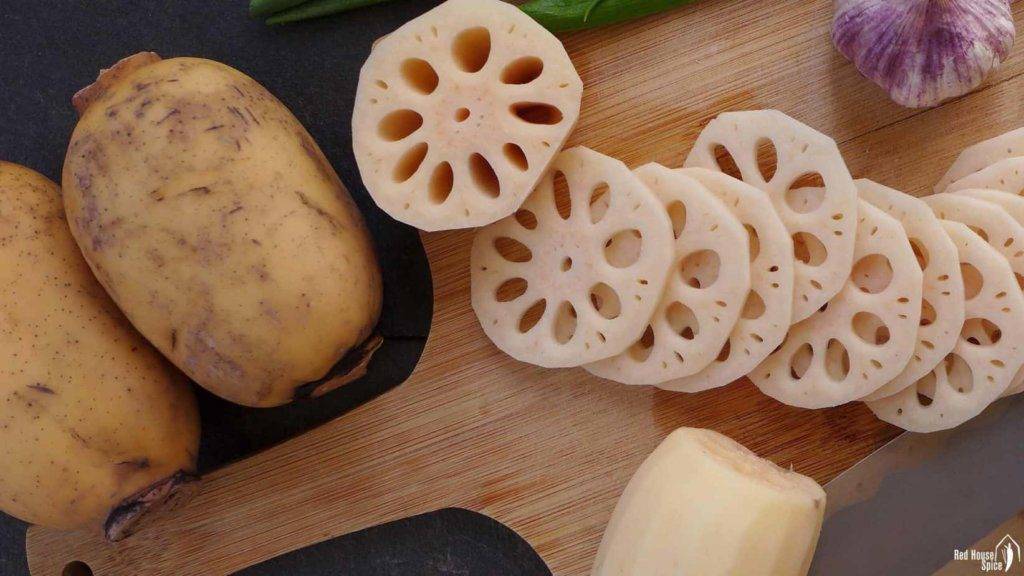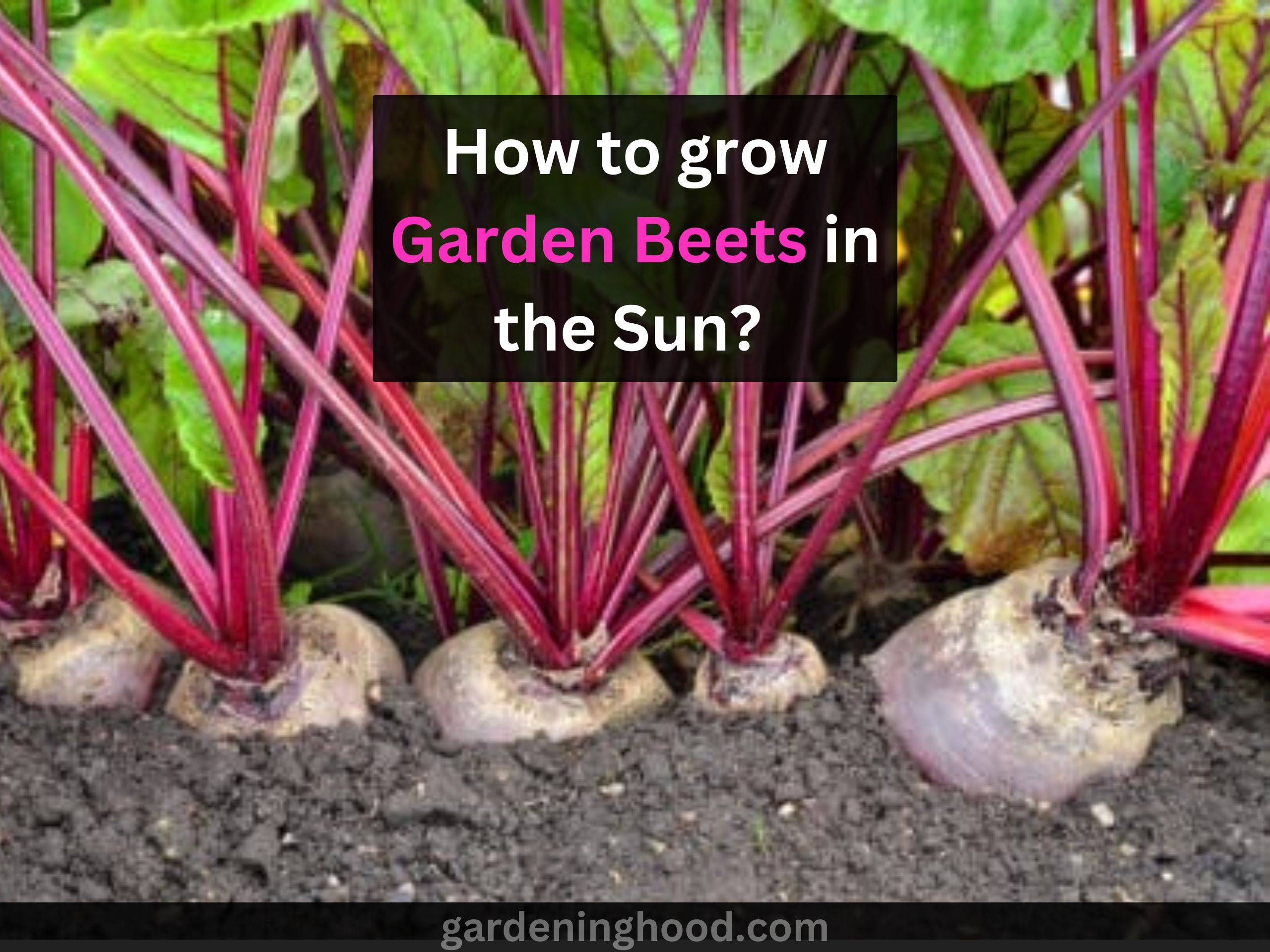Lotus Root Vegetable – How to Grow Lotus Roots for Kitchen?
What is a Lotus Root Vegetable? Have you heard about eating Lotus Stems in your culture? Yes! you have heard it right. It is a very popular vegetable eaten in Asian cultures. This article will discuss the amazing Lotus Root Vegetable and its growth tips for the kitchen garden.

Countries like China, Japan, India, Sri Lanka, Malaysia, and Korea make very popular and delicious dishes using the Lotus Root vegetable. In Japan, this vegetable is a popular foodstuff and is known as “ren kon” in Nihongo. In China, there are many delicacies prepared from the Lotus Root Vegetable from sweet desserts to sour side dishes.
Quick takeaways:
- The lotus root is referred to as the lower part of the lotus plant.
- Lotus Roots are used to grow underwater.
- The size of the lotus root is around 3′ to 4′ in height and 2″ to 4″ in width.
To study how to grow lotus roots and in more detail about lotus root vegetables you need to study the below-mentioned information.
A detailed discussion regarding Lotus Root Vegetable
The Lotus Root Vegetable is the lower part of the lotus plant which is edible. It is the rhizome or the stem part of the plant. It is crunchy in taste and has a mild flavor and texture similar to that of a raw sweet potato. This vegetable has been widely used in the culinary arts or cooking in East Asian cuisines, particularly in Chinese and Japanese cultures.

The Lotus flower from which the vegetable is obtained is native to various parts of the Asian continent, Australian continent, Middle Eastern countries, and the American continent. But this vegetable is often widely used by Asian cultures and countries. The Lotus flower grows in the mud of shallow ponds, marshes, and flooded fields.
This vegetable can be used in multiple ways. It can be deep-fried into chips, Stir-fried with vegetables, it can be braised or even fermented or can be eaten steamed or boiled in side dishes or main dishes. It can also be used for desserts.
Lotus Root is grown underwater and has a long cylindrical shape that resembles a squash or sweet potato. An average stem can grow up to 20-22 cms and is connected with other stems thus making it quite long which can form a chain and can grow up to 4 feet or 120 cms in overall length.

A young lotus root vegetable has purplish-white skin and it turns beige to dark brown when it matures. Inside the skin, the vegetable is white or ivory in shade with multiple air pockets that run entirely through the length and those create a wonderful pattern when the vegetable is cut horizontally.
The younger roots are used more frequently in deserts and for fresh culinary purposes as they are tender and have a different texture and taste. The Mature Lotus roots are used more for making curries, gravies, and other dishes that need a potato-like texture.
Let us know a few more details regarding the Lotus Root Vegetable.
| Common Name | Indian Lotus vegetable, Kamal Kakdi, Sacred Water Lotus, Chinese Arrowroot |
| Botanical Name | Nelumbo nucifera is the Botanical name for lotus from which the rhizomes or roots are separated for consumption. |
| Habit | Herbs |
| Duration | Perennial |
| Family | Nelumbonaceae |
| Harvesting Season | Autumn to fall |
| Soil Type | Humus rich soil |
| Specialties | The amazing fact about the lotus plant is that almost all the parts of the plant are edible in one or another way. This vegetable has been widely used in the culinary arts or cooking in East Asian cuisines, particularly in Chinese and Japanese cultures. The typical method for extracting this vegetable is that farmers tend to feel the rhizome with the help of their toes and then dig out the stems and roots with the help of their hands. |
| Height | 3′ to 4′ tall at maturity |
| Width | 2″ to 4″ in diameter at maturity |
| Native | The Lotus flower from which the vegetable is obtained is native to various parts of the Asian continent, Australian continent, Middle east countries, and the American continent. But this vegetable is often widely used by Asian cultures and countries. |
| Toxicity | This vegetable is completely edible and is non-toxic. |

Benefits of Lotus Root Vegetable
- Prevents allergies and infections in the body.
- This vegetable is good if you have often nose bleeds.
- This vegetable is full of dietary fiber thus improving digestion.
- Regulates Blood pressure.
- This vegetable is good for skin and hair diseases.
- This is one of the best vegetables to include in your diet as it promotes weight loss and is low in calories.
For more such plant related-articles, you may also read, What is Rodgersia Cultivation? – How to Grow and Care for Fingerleaf Rodgersia Plants?
How to Grow the Lotus Root vegetable for Kitchen?
Cultivating the Lotus root vegetable is quite easy. These are water plants and require protection from cold temperatures.
How to plant the Lotus Root vegetable?
- The first step is to plant the lotus rhizomes in a deep sunny water pond or a garden container or even create an artificial pond-like structure in the home garden.
- The planting depth of the rhizomes should be 10 to 24 inches deep inside the water source. In colder climates the roots should be moved to warmer spaces to keep the plants warm or the container should be moved into a deeper water source.
- For sowing the rhizomes humus-rich soil with a mixture of compost should be used.
- This plant needs a doze of fertilizers daily.
- Removing the yellow plants or rotten parts of the plant is necessary and this plant needs to be checked upon on daily basis.
- Plant pests like Aphids or spider mites might attack the leaves of the plant. Spraying the leaves with a strong stream of water can dust off these pests immediately.
- Fishes can also be released in the container or the water source which is created to prevent the development of pests and diseases in the lotus plants.
- For consumption of the lotus roots, the roots can be harvested at any time of the year once the plant is established properly.
Let us know a few FAQs about the Lotus Root vegetable!

Which parts of the Lotus plant are edible?
All parts of this plant are edible. The stems can be used as a green vegetable. The leaves can substitute flour-based items like tortillas in wraps. The main part which is widely consumed is the rhizomes or the roots.
Is it easy to grow Lotus at home?
This plant is commonly grown in water sources, but creating the same atmosphere at home might be a little difficult and invasive.
How long does it take to grow Lotus Root Vegetable?
It takes around 6 to 8 months to grow the Lotus Root Vegetable once the plant is established.


